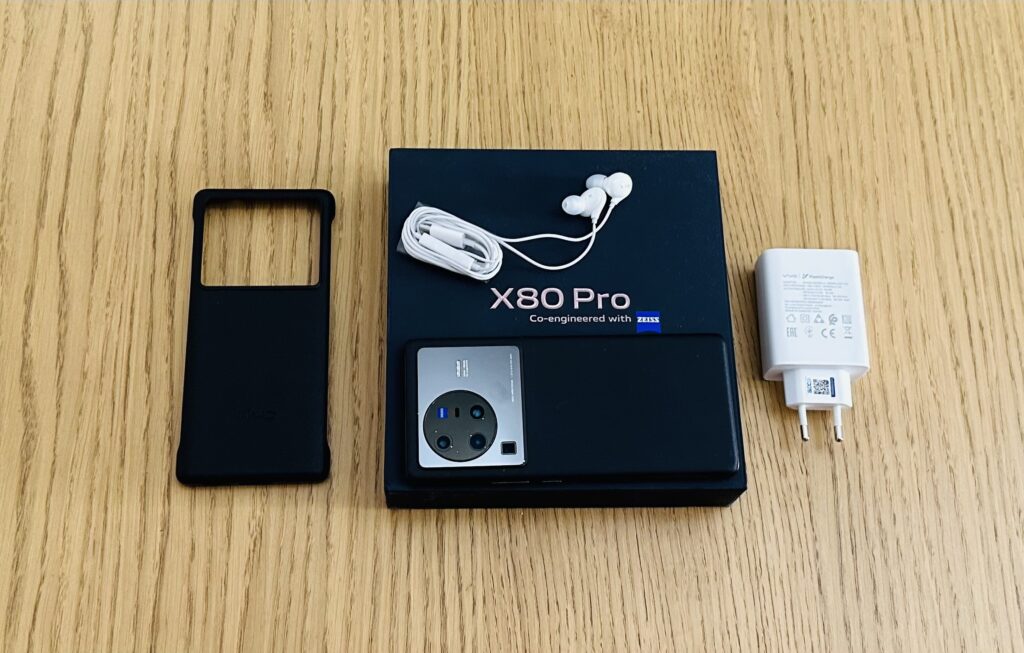Vivo X80 Pro: Slow and steady growth in emerging as a viable alternative in the high-end smartphone market. A little over two years after its arrival in Europe, Vivo’s path is beginning to bear fruit while differentiating itself from its Chinese competitors. No short-lived launches of similar models in terms of specifications and prices, which often end up confusing instead of enticing consumers in favour of a broader plan characterised by innovative and recognisable products with distinctive features, are a sign of the company’s vision.
Founded in 2009 by Shen Wei and present in 60 countries worldwide and 21 European markets (11 opened in 2002), Vivo is the fifth largest smartphone manufacturer globally and in Europe. Rather than offering promotions with lower-priced products as gifts for the purchase of a premium smartphone, Vivo has chosen to gain visibility by espousing the sport most dear to Europeans: first with its sponsorship of the 2021 European Football Championship, now with its partnership with Fifa for the Qatar 2002 World Cup, where it will showcase the Vivo X Fold+, an updated version of the company’s first foldable smartphone, already available in China.
Vivo in Eurpean Market
Turning to product analysis, the key to making its way in Europe is the Vivo X80 Pro, one of the best camera phones on the market. By this, we mean the excellent quality of the photo-video compartment, which is only one of the reasons why this smartphone is worth considering. The dimensions are considerable, with 219 grams and more than 9 millimetres of thickness, which, together with the 6.78-inch display, do not allow the phone to be easily handled with one hand. At the same time, however, the design stands out due to the island on the back that houses the circular photo module, periscope camera and LED flash. A stark choice, which one may or may not like, makes the smartphone unique among many similar models.
The curved-edge Amoled screen comes from Samsung and has a resolution of 1440 x 3200 pixels with a maximum density of 517 PPI, a dynamic refresh rate of 120 Hz and 10-bit HDR10+ support, with a peak brightness of 1500 nits ensuring effective viewing even in bright sunlight. Another notable new feature is the ultrasonic fingerprint reader under the screen, which offers an extra-large surface than usual, being 11 times wider than average. This affects the unlocking speed of 0.2 seconds and the registration of one’s fingerprint during set-up. The larger area also allowed for adding features, such as launching two of the most frequently used apps, which are opened by placing your finger on the sensor.
The best point of the Vivo X80 Pro is the photography, with the leap forward over the past achieved thanks in part to the partnership with Zeiss, with engineers from the two companies working symbiotically on improvements to shots and movies. Proof of this is the presence of elements found in high-end lenses, such as digital twins, a technique developed by Zeiss for creating and prototyping new lenses. Thanks to creating a virtual model on which to simulate and precisely test the performance of the lenses, Vivo has perfected the eyes on the back of the phone by adjusting resolution and contrast. Vivo has also integrated Zeiss’ T* Coating into the cameras of the high-end models, a solution that reduces reflections and ensures greater sharpness and quality of shots.




Technical Features
On the technical side, the system consists of a quad camera on the rear, with the main one equipped with a 50 MP Samsung GNV sensor (f/1.57) with optical image stabilisation, the 48MP wide-angle camera made by Sony (f/2. 2), the 8 MP periscope camera with 5X optical zoom and Hyper-zoom up to 60x, and a 12 MP portrait camera (f/1.85 5) with the usual Gimbal that Vivo has accustomed us to, which facilitates good quality clips by reducing shakiness and shaking.
On the front side, there is a 32 MP camera (f/2.45), and for both selfie and rear shots, the quality is always very high, and the colours are brilliant but without overdoing it. Beyond the numbers, the richness of the system lies in the range of options available. One of the best is the Cinematic Video Bokeh mode, which creates a cinematic-format oval blur, recreating the effect of anamorphic film lenses at a vivid level and thus giving clips an aesthetic impact. Zeiss’ Superbire Night Camera is also intriguing, promising premium night shots with bespoke features such as Pure Night View; two of the reasons, along with fast focusing and the V1+ image processor that identifies the appropriate mode based on lighting conditions, why the Vivo X80 Pro is among the best solutions for night-time shooting and video.
Equipped with a Qualcomm Snapdragon 8 Gen 1 processor and a vapor chamber cooling system that keeps temperatures under control during gaming sessions, the Vivo X80 Pro has a 4700 mAh battery that’s enough to get you through the day even with heavy usage between applications, photos and videos, browsing and a few gaming sessions. The operating system is Android 13 with the Funtouch interface that offers several gestures to take a screenshot and turn on the torch. In the box is an 80W power supply for fast charging, which takes about 36 minutes from 0 to 100 per cent.
Available in the unique Cosmic Black colour and 12GB ram and 256GB UFS 3.1 memory version, the smartphone costs €1,299. A high price, which includes the Xclusive Care package, with pick-up and delivery of the smartphone to the chosen address, repair or replacement of the damaged screen in the first six months after purchase at no additional cost or expense to the buyer, and free video assistance in the event of problems. An important detail concerns the guaranteed update by Vivo: 3 major releases and monthly security patches.

